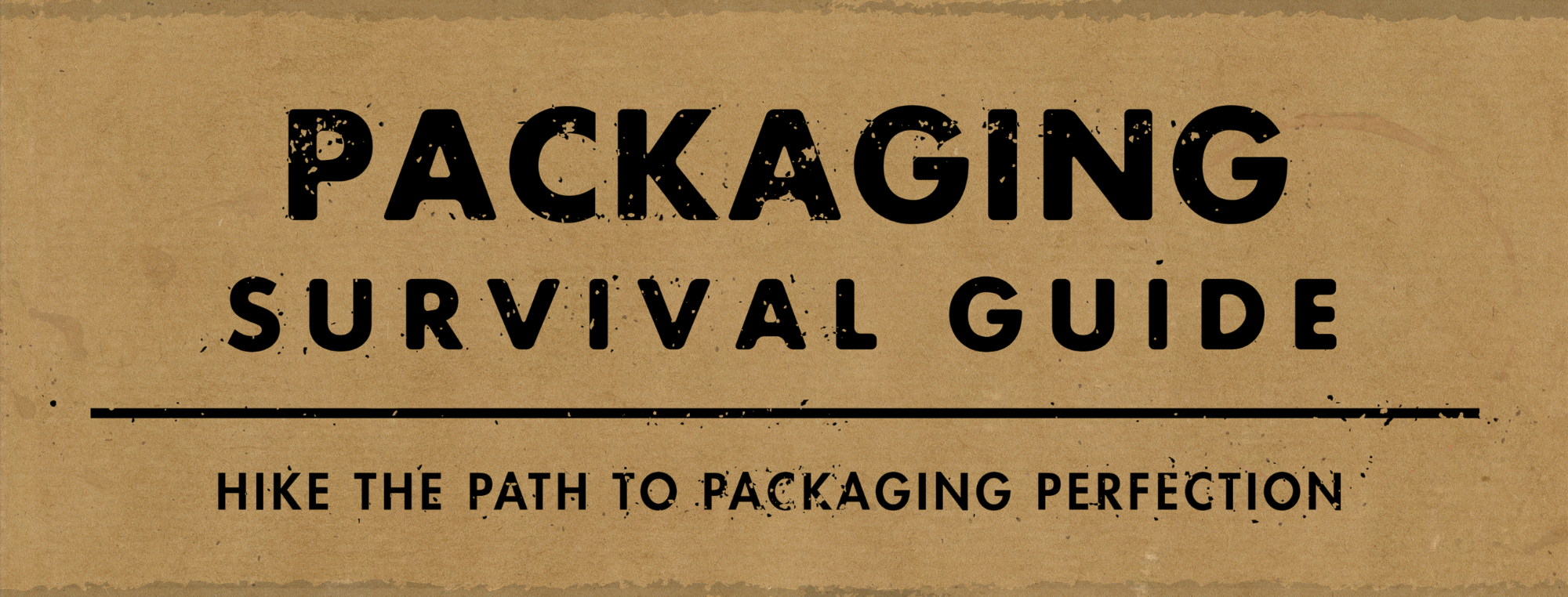Packaging Survival Guide


Welcome
We salute you, powerful pursuer of packaging perfection.
The pursuer of packaging perfection must first realize that finding the perfect package is paramount to their product's success. You may have created a concoction to cure cancer, or developed the very elixir of eternal life.
Your perfect product will never even get noticed, let alone purchased, if you don't package it well.
This process may not be as cut and dry as you expected, but rather a journey. Let us be your guide; your Sherpa on the path of packaging perfection. Every packaging project has the same elements: product, container, closure, artwork, decoration, filling, logistics.
Let's get started!
Product
The product is the stuff that you’re actually selling.
The product is what you've spent the last 20 years developing, honing, testing, and manufacturing. This is your perfected fudge recipe, facial crème, eye toner, body bronzer, furniture stripper, gelato, fizzy drink, home brew, canned preserves, apricot jam, bug repellant, body lotion, meat marinade ¦ whatever. The point is you've got something that you want to sell. This is what you bring to your perfect packaging project, and we'll help you with the rest.
Before your product can be sold to the masses, you'll want to make sure that you've cleared it with any and all applicable regulatory agencies. Health products have certain regulatory statements required by the Federal Drug Agency (FDA). Personal care and cosmetic products may require certain testing, thanks to the Food, Drug and Cosmetic Act (FD&C), and some ingredients have even been legally banned. Food and beverage products may need a Nutrition Facts panel (we can help you get one).
There's a lot to learn and we can help you along the way.
See some of what the FDA has to say about cosmetics >
Container
The container is what you put the product in.
There IS a container that's perfect for your product. To find it, you need to consider the following:
Study the Competition. Look around and see what kind of packaging your competitors are using. You want to be unique, but you need to use packaging that makes sense. Take a quick course on Bottleology at Container and Packaging University. Read about the strengths (and the occasional Achilles' heels) of each bottle band member.
Study how your product will be used. Think through where and how your customer will use and store your product. Chose a container that fits that. For example, putting eye drops in a milk jug? Overkill. Putting a glass container in the shower or bathroom? Dangerous.
Study how your product and the container interact. Not everything can and should be packaged in glass, or plastic, or metal. There are unique things about your product that may require a specific material. Talk to your Container and Packaging Sherpa for tips on what will work.
Read more about picking the perfect package for your product >
Learn more about container styles in Container and Packaging University’s Bottleology 101 >
Crash through Plasticology 101 and learn what type of plastic is best for your product >
Closure
The closure is what makes your product easy to use.
Closure, lid, cap … they close the container. And there are all kinds too: fliptop, continuous thread, 45-400 neck finish“ the closure talk goes on and on. Here's the key with closures ¦ functionality. Worry about making it pretty after you've decided what it needs to do.
Getting the right closure and container combination is key to packaging perfection. Does it make sense to put White Out in a lotion bottle with a pump? No. Because that's not how White-Out is used. You need a cap with a brush.
When choosing a closure, the same container-choosing rules apply:
Study the Competition. See what similar products are using for closures.
Study how your product will be used. Think through what's easiest for the customer, and balance that with your filling process and what customers expect. Putting jam in a tube might be easier for your customer to spread on their toast, but (1) tubes can't tolerate a heat fill process and (2) customers are used to using a knife or spoon to scoop jam out of a wide-mouthed jar.
Study how your product and the closure interact. Make sure that your product works with the closure. If your product is a thick face crème, use a jar with large cap. If your product is perfume, use a sprayer. If your product is fingernail polish, use a cap with a brush.
Read more about picking the perfect closure for your product >
Start shopping closures at Container and Packaging >
Artwork
The artwork tells me why I should buy your product.
What's inside? What will it do for me? How will it make my life easier, more convenient, better, younger, more attractive? Why should I buy your product? Oh, and it has to answer this and a multitude of other questions in less than 3 seconds.
You may need to include: Ingredients, weight declaration, regulatory statements, bar code, directions for use, product title, contact information, e-mark, logo, disclaimers, trademarks, product benefits,product features, registered trademarks, patent numbers, copyright marks, batch number, flavor, testing statements, URL, email address ¦ eeeeek! Certain products re-quire a certain combination of these elements. It's a lot to research. It's a lot to learn, that's why we strongly recommend that you ¦
Hire a professional packaging designer. Your sister's boyfriend's college roommate may be a designer (and maybe even a good one), but the fate of your entire endeavor rests on whether or not you've got a good design. You won't sell anything unless you can get noticed.
We've got designers standing by (I know, shameless plug). Just call 1-800-473-4144 ext 6000 and a Container and Packaging Designer will guide you to art-work nirvana.
See what Container and Packaging Design can do for you >
Read more about packaging design on the Container and Packaging Blog >
Decoration
Decoration is how you get your artwork on your package.
Do you want your artwork printed directly on the container, do you want it foil stamped, or maybe even printed on a full color, high gloss label (sticker) that can be applied to your container?
Different decoration processes have different properties. Each product requires a unique set of storage capabilities. Does your product hang out in the shower or bath? Refrigerator? Freezer? Does it get wet? Does it need to with-stand the elements? Is your product caustic, acidic, basic, or neutral? Is your product sensitive to light, heat, cold, meteor showers? If so, let us know. We can help you figure out what decoration process will be best for your product (no guarantees though … particularly regarding the meteor showers).
There are lots of decorating processes to choose from, and your artwork will need to be adapted to whatever decoration process you select.
Give us a call and based on your product's application, and artwork demands, we can come up with the perfect decoration process for your product.
Learn more about the different decoration processes >
What’s right for you? Labels or silk printing?
Filling
Filling is how you get your product IN your container.
Ultimately, you actually need to get your product IN your container and get it sealed. How this happens, depends on what your product is and what your filling process is.
It would be pretty silly to put a label on your glass jar, fill it with hot apricot jam, and then place it in a boiling vat of water for 12 minutes. Chances are, the label will get boiled off.
Perhaps you need to autoclave your lids be-fore use. What if you need to melt a foil liner over the mouth of your container? All of these steps need to be considered when figuring out your container, closure, art-work, and decoration sequence.
We can get you connected with someone that can take your decorated containers, fill˜em up, put on your lids and ship them to … wherever!
Logistics
We help you get stuff where, how and when you want it.
There are a lot of moving parts to getting a supply chain set up. If you're doing this in your garage, then great, it looks like you've got it handled ¦ but if you're tired of doing the financing, selling, marketing, decorating, de-signing, whipping up batches, and filling and shipping it all by yourself, then for the love of Pete, let us help you! Imagine getting a bit of your life back and handing off some of the minutia to us pros!
We'll help you get what you need where you need it when you need it.